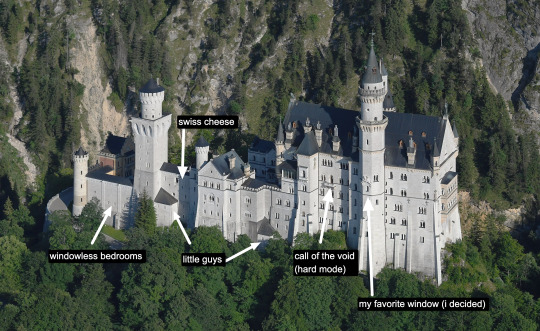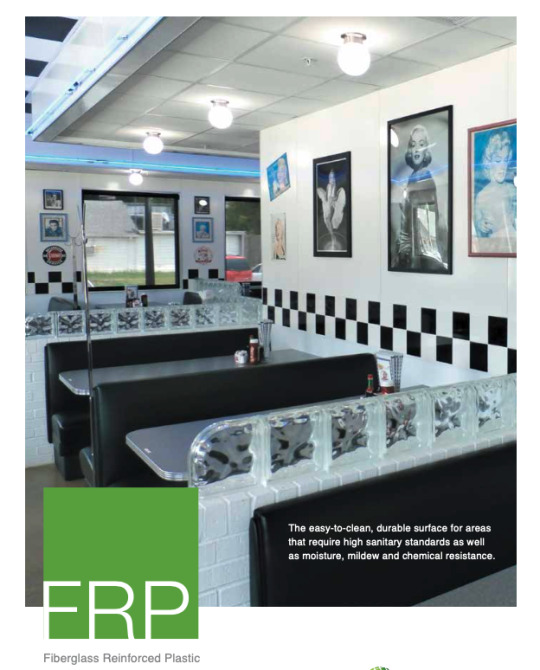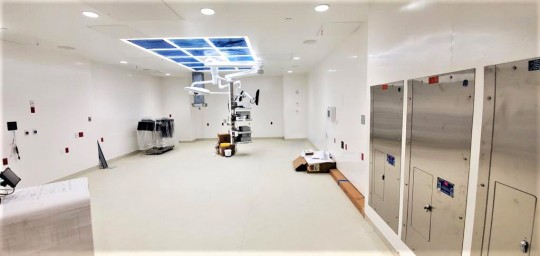#building project estimates
Explore tagged Tumblr posts
Text
Get precise and detailed construction estimates from PEJA Surveying. Our expert online estimators provide accurate cost projections for homeowners, builders, developers, and architects in the UK. We use advanced technology and industry knowledge to ensure reliable estimates for successful project planning and budgeting.
#construction estimates#building cost estimators#UK construction estimates#online building estimates#PEJA Surveying#detailed construction costs#accurate building estimates#UK builders#construction project budgeting#cost projection services#construction cost planning#estimating services UK#online construction estimators#building project estimates#construction cost certainty
0 notes
Photo







Physical media is forever (Patreon)
#Doodles#Helix#Max Vyer#Dexter Favin#Vent#I'm trying to remember the last time I made a fandom vent rather than my sona.... Probably Vargas-something#*continues to project onto Max* He really is just like me fr#Probably pretty obvious what this is in reference to - turned a bit more malicious and intentional here#Something something it's easier to be angry at a source of intention than to be sad about coincidental bad luck#I'm not about to be thankful for a bad thing happening but the fallout thereof Is interesting in its own right#Like how this probably wouldn't have crossed my mind elsewise - nor would I have started and finished it all in one big sprint#Not much else I could do except get some of the feelings Out#Ft. some of the thoughts I had - self arguments to try to minimize(?) the hurt#Especially of just recreating it since so much of it was my thoughts - Max's dreams are just his subconscious right? Haha#But when you build something over the course of years there's these subtle builds that divorce Then from Now#Not to mention whatever stimuli at the time - if Max's life coincided with specific dreams and both are never repeated#One thing that I think about a lot - ironically haha - is that you only get to experience A Thing for the first time Once#You are then forever changed even if just in some small way - an action that can never be unactioned#Even otherwise recreating the perfect set of circumstances just won't produce the same outcome#It all threads into my thoughts on Legacy as well - if what we leave behind ceases to be - if our butterfly wings are blown out#It could happen at any point - posthumously or while we're still here - and how much does that change in the long run?#It's an interestingly depressing thought haha#It's also part of why I double down on art so so so much - a language that cuts to the core of me#Every picture worth 1000 words - hopefully enough to make up for however many lost (I did a rough estimate and it would've been ~380k)#Somewhere in there are the feelings that lost their voice - were big and loud enough to immortalize in graphite on paper#Scanned and uploaded and maybe even downloaded elsewhere in the world - preserved fourfold in a way a single file on a single computer isn't#Even if one is destroyed it's somewhere else; the danger of only having one copy a kind of trust in program or physicality but no guarantee#Thoughts and thoughts and thoughts - also part of why I tag to tag limit so often I want them saved somewhere outside myself#Seems silly to talk about the art too but I have thoughts there as well haha - like of Madame Vyer asking for Dex's lighter#Dex holding Max back - to protect him from the damage while forcing him to confront it cruelty cruelty
6 notes
·
View notes
Text
"I'm here to brag about how much money I spent just to be able to run a game that wouldn't need remotely that much power if it wasn't full of useless bullshit. I'm mad at people who think bloatware is bad instead of the guys who scammed me out of several grand by deliberately making games use more power than they need to".
My solution for bloatware is this: by law you should hire in every programming team someone who is Like, A Guy who has a crappy laptop with 4GB and an integrated graphics card, no scratch that, 2 GB of RAM, and a rural internet connection. And every time someone in your team proposes to add shit like NPCs with visible pores or ray tracing or all the bloatware that Windows, Adobe, etc. are doing now, they have to come back and try your project in the Guy's laptop and answer to him. He is allowed to insult you and humilliate you if it doesn't work in his laptop, and you should by law apologize and optimize it for him. If you try to put any kind of DRM or permanent internet connection, he is legally allowed to shoot you.
With about 5 or 10 years of that, we will fix the world.
#relatedly: a gamer friend is helping me with a new computer build#not for gaming but it still needs to be moderately powerful bc I'm planning on doing audio and video editing#but like. I don't need a high-end graphics card.#we did the 'evaluate my needs and draw up a rough budget projection' part yesterday#and it's looking like about $800-$1k is gonna get me a very solid setup with plenty of upgradability if I end up needing more power someday#and that's with estimating high & assuming paying full retail for all-new parts#so anyway idk what a typical cost is for a higher-end graphics card but $4k for a rig sounds... excessive
70K notes
·
View notes
Text
I slept in and just woke up, so here's what I've been able to figure out while sipping coffee:
Twitter has officially rebranded to X just a day or two after the move was announced.
The official branding is that a tweet is now called "an X", for which there are too many jokes to make.
The official account is still @twitter because someone else owns @X and they didn't reclaim the username first.
The logo is 𝕏 which is the Unicode character Unicode U+1D54F so the logo cannot be copyrighted and it is highly likely that it cannot be protected as a trademark.
Outside the visual logo, the trademark for the use of the name "X" in social media is held by Meta/Facebook, while the trademark for "X" in finance/commerce is owned by Microsoft.
The rebranding has been stopped in Japan as the term "X Japan" is trademarked by the band X JAPAN.
Elon had workers taking down the "Twitter" name from the side of the building. He did not have any permits to do this. The building owner called the cops who stopped the crew midway through so the sign just says "er".
He still plans to call his streaming and media hosting branch of the company as "Xvideo". Nobody tell him.
This man wants you to give him control over all of your financial information.
Edit to add further developments:
Yes, this is all real. Check the notes and people have pictures. I understand the skepticism because it feels like a joke, but to the best of my knowledge, everything in the above is accurate.
Microsoft also owns the trademark on X for chatting and gaming because, y'know, X-box.
The logo came from a random podcaster who tweeted it at Musk.
The act of sending a tweet is now known as "Xeet". They even added a guide for how to Xeet.
The branding change is inconsistent. Some icons have changed, some have not, and the words "tweet" and "Twitter" are still all over the place on the site.
TweetDeck is currently unaffected and I hope it's because they forgot that it exists again. The complete negligence toward that tool and just leaving it the hell alone is the only thing that makes the site usable (and some of us are stuck on there for work).
This is likely because Musk was forced out of PayPal due to a failed credit line project and because he wanted to rename the site to "X-Paypal" and eventually just to "X".
This became a big deal behind the scenes as Musk paid over $1 million for the domain X.com and wanted to rebrand the company that already had the brand awareness people were using it as a verb to "pay online" (as in "I'll paypal you the money")
X.com is not currently owned by Musk. It is held by a domain registrar (I believe GoDaddy but I'm not entirely sure). Meaning as long as he's hung onto this idea of making X Corp a thing, he couldn't be arsed to pay the $15/year domain renewal.
Bloomberg estimates the rebranding wiped between $4 to $20 billion from the valuation of Twitter due to the loss of brand awareness.
The company was already worth less than half of the $44 billion Musk paid for it in the first place, meaning this may end up a worse deal than when Yahoo bought Tumblr.
One estimation (though this is with a grain of salt) said that Twitter is three months from defaulting on its loans taken out to buy the site. Those loans were secured with Tesla stock. Meaning the bank will seize that stock and, since it won't be enough to pay the debt (since it's worth around 50-75% of what it was at the time of the loan), they can start seizing personal assets of Elon Musk including the Twitter company itself and his interest in SpaceX.
Sesame Street's official accounts mocked the rebranding.
158K notes
·
View notes
Text
"In Sacramento, California, an estimated 6,615 people are experiencing homelessness, a number that — while still heartbreakingly high — has declined 29% since 2023, according to the latest Point In Time counts.
But a new project, which has been in the works since 2022, might bring that number down even lower.
A new 13-acre property purchased by Sacramento County will soon be home to the Watt Service Center and Safe Stay.

The county broke ground on the mixed-use service center this week, which will provide shelter, emergency respite, safe parking, health services, and more to community members who are unsheltered — meaning they don’t have a place to safely sleep at night.
“We wanted to do something that is not only larger, but a large-scale campus to provide more than just the shelter,” Janna Haynes, of the county’s Department of Homeless Services and Housing, told KCRA3 News.
The Watt Service Center will have amenities to help meet the needs of anyone staying there, including bathrooms, showers, laundry, and food, as well as mental health, treatment, and employment services.
“You can also meet with your case manager, get behavior health services, look for a job, get rehousing services, a place for your dog,” Jaynes added. “It’s really everything you need, not only for your day-to-day life, but to hopefully end your homelessness.”
While the center is a costly offering, the city explained that it is ultimately less expensive than allowing the homelessness crisis to go unmitigated.
The land was purchased for $22 million and will cost an estimated $42 million to construct the center. According to ABC10 News it will be mostly funded by the American Rescue Plan Act.
While the center will have the capacity to host 225 beds in Safe Stay cabins, 50-person capacity in Safe Parking, and 75-person capacity for emergency/weather respite beds, it will serve countless others outside of the 350 total people it can house at any given time.

According to a press release from the county, “conservative estimates” have found that over the course of 15 years, the center will serve 18,000 people.
In 2017, the city found that the average cost for an “unsheltered individual” was about $45,000 a year, considering public systems like county jail, shelters, behavioral health, and more.
With the projected impact of the shelter, that cost lowers to less than $3,600 per person.
“If you break down the funding, it’s actually not that expensive,” Rich Desmond, county supervisor for District 3, told ABC10.
“It’s a heck of a lot cheaper than letting someone stay out in the community, unsheltered where they are extremely expensive in terms of the emergency response from fire, our emergency rooms, our law enforcement response.”
Providing what the county calls “wraparound services” not only brings down costs but truly helps people meet their basic needs.
“The really great thing about this site in particular, that we don't have at any other shelters, is the sheer size and the ability to really wrap everything people need,” Emily Halcon, director of the Department of Homeless Services and Housing with Sacramento County, told ABC10.
One notable feature is the center’s Safe Parking spaces, which are the first of their kind in the city. People living in their cars will now have a safe place to park, monitored by security.
“We know a lot of people who are unsheltered actually are living out of their cars,” Desmond said, “maybe a family that’s barely hanging on but they still need that vital transportation to get their kids to school or get to work.”
This support is especially helpful for those who are newly homeless, Halcon added, building on the amenities provided in the county’s two other “safe stay” facilities.
While Sacramento County just broke ground on the Watt Service Center, officials say they hope to begin moving people into the facility in January 2026.
“Our staff is putting in extra time and attention to this campus, ensuring that it houses everything we need to end homelessness for people,” Desmond said in a statement.
Once it’s up and running, Jaynes told KCRA3, they plan to onboard formerly unhoused community members as part of the staff at the facility.
“When you have a conversation with someone who understands where you’ve been, and you see the success they’re having now,” Jaynes said, “it really does give you hope something could be different.”
-via GoodGoodGood, January 24, 2025
7K notes
·
View notes
Text
on neuschwanstein castle (part 1)
This is an essay in two parts.

Neuschwanstein Concept Drawing by the stage designer (!!) Christian Jank (1869).
There exist in architecture clear precedents to the McMansion that have nothing to do with suburban real estate. This is because “McMansionry” (let’s say) has many transferable properties. Among them can be included: 1) a diabolical amount of wealth that must be communicated architecturally in the most frivolous way possible, 2) a penchant for historical LARPing primarily informed by media (e.g. the American “Tuscan kitchen”) and 3) the execution of historical styles using contemporary building materials resulting in an aesthetic affect that can be described as uncanny or cheap-looking. By these metrics, we can absolutely call Neuschwanstein Castle, built by the architect Eduard Riedel for King Ludwig II of Bavaria, a McMansion.
Constructed from 1869 through 1886 – the year of Ludwig’s alleged suicide after having been ousted and declared insane – the castle cost the coffers of the Bavarian state and Ludwig himself no fewer than 6.2 million German gold marks. (That's an estimated 47 million euros today.) The castle's story is rife with well-known scandal. I'm sure any passing Swan Enthusiast is already familiar with Ludwig’s financial capriciousness, his called-off marriage and repressed homosexuality, his parasocial obsession with Richard Wagner, his complete and total inability to run his country, and his alleged "madness," as they used to call it. All of these combine to make Neuschwanstein inescapable from the man who commissioned it -- and the artist who inspired it. Say what you like about Ludwig and his building projects, but he is definitely remembered because of them, which is what most monarchs want. Be careful what you wish for.

Neuschwanstein gatehouse.
How should one describe Neuschwanstein architecturally? You’d need an additional blog. Its interiors alone (the subject of the next essay) range from Neo-Baroque to Neo-Byzantine to Neo-Gothic. There are many terms that can loosely define the palace's overall style: eclecticism, medieval revivalism, historicism, chateauesque, sclerotic monarchycore, etc. However, the the most specific would be what was called "castle Romanticism" (Burgenromantik). The Germans are nothing if not literal. Whatever word you want to use, Neuschwanstein is such a Sistine Chapel of pure sentimentality and sugary kitsch that theme park architecture – most famously, Disney's Cinderella’s castle itself – owes many of its medieval iterations to the palace's towering silhouette.
There is some truth to the term Burgenromantik. Neuschwanstein's exterior is a completely fabricated 19th century storybook fantasy of the Middle Ages whose precedents lie more truthfully in art for the stage. As a castle without fortification and a palace with no space for governance, Neuschwanstein's own program is indecisive about what it should be, which makes it a pretty good reflection of Ludwig II himself. To me, however, it is the last gasp of a monarchy whose power will be totally extinguished by that same industrial modernity responsible for the materials and techniques of Neuschwanstein's own, ironic construction.
In order to understand Neuschwanstein, however, we must go into two subjects that are equally a great time for me: 19th century medievalism - the subject of this essay - and the opera Lohengrin by Richard Wagner, the subject of the next. (1)
Part I: Medievalisms Progressive and Reactionary

The Middle Ages were inescapable in 19th century Europe. Design, music, visual art, theater, literature, and yes, architecture were all besotted with the stuff of knights and castles, old sagas, and courtly literature. From arch-conservative nationalism to pro-labor socialism, medievalism's popularity spanned the entire political spectrum. This is because it owes its existence to a number of developments that affected the whole of society.
In Ludwig’s time, the world was changing in profound, almost inconceivable ways. The first and second industrial revolutions with their socioeconomic upheavals and new technologies of transport, manufacturing, and mass communication, all completely unmade and remade how people lived and worked. This was as true of the average person as it was of the princes and nobles who were beginning to be undermined by something called “the petit bourgeoisie.”
Sustenance farming dwindled and wage labor eclipsed all other forms of working. Millions of people no longer able to make a living on piecemeal and agricultural work flocked to the cities and into the great Molochs of factories, mills, stockyards, and mines. Families and other kinship bonds were eroded or severed by the acceleration of capitalist production, large wars, and new means of transportation, especially the railroad. People became not only alienated from each other and from their labor in the classical Marxist sense but also from the results of that labor, too. No longer were chairs made by craftsmen or clothes by the single tailor -- unless you could afford the bespoke. Everything from shirtwaists to wrought iron lamps was increasingly mass produced - under wretched conditions, too. Things – including buildings – that were once built to last a lifetime became cheap, disposable, and subject to the whimsy of fashion, sold via this new thing called “the catalog.”

William Morris' painting Le Belle Iseult (1868).
Unsurprisingly, this new way of living and working caused not a little discontent. This was the climate in which Karl Marx wrote Capital and Charles Dickens wrote A Christmas Carol. More specific to our interests, however, is a different dissenter and one of the most interesting practitioners of medievalism, the English polymath William Morris.
A lover of Arthurian legend and an admirer of the architect and design reformer John Ruskin, Morris was first trained in the office of architect G. E. Street, himself a die-hard Gothic Revivalist. From the very beginning, the Middle Ages can be found everywhere in Morris' work, from the rough-hewn qualities of the furniture he helped design to the floral elements and compositions of the art nouveau textiles and graphics he's most famous for -- which, it should be said, are reminiscent of 15th century English tapestries. In addition to his design endeavors, Morris was also a gifted writer and poet. His was a profound love for medieval literature, especially Norse sagas from Iceland. Some of these he even translated including the Volsunga Saga -- also a preoccupation of Wagner's. Few among us earn the title of polymath, but Morris' claim to it is undeniable. Aside from music, there really wasn't any area of creative life he didn't touch.
However, Morris' predilection for the medieval was not just a personal and aesthetic fascination. It was also an expression of his political rejection of the capitalist mode of production. As one of the founders of the English Arts & Crafts Movement, Morris called for a rejection of piecemeal machine labor, a return to handicraft, and overall to things made well and made with dignity. While this was and remains a largely middle class argument, one that usually leads down the road of ethical consumption, Morris was right that capitalism's failing of design and architecture did not just lie with the depreciated quality of goods, but the depreciated quality of life. His was the utopian call to respect both the object and the laborer who produced it. To quote from his 1888 essay called "The Revival of Architecture," Morris dreamed of a society that "will produce to live and not live to produce, as we do." Indeed, in our current era of AI Slop, there remains much to like about the Factory Slop-era call to take back time from the foreman's clock and once more make labor an act of enjoyable and unalienated creativity. Only now it's about things like writing an essay.
I bother to describe Morris at length here for a number of reasons. The first is to reiterate that medievalism's popularity was largely a response to socioeconomic changes. Additionally, since traditionalism - in Ludwig's time and in ours - still gets weaponized by right-wing losers, it's worth pointing out that not all practitioners of medievalism were politically reactionary in nature. However – and I will return to this later – medievalism, reactionary or not, remains inescapably nostalgic. Morris is no exception. While a total rejection of mass produced goods may seem quixotic to us now, when Morris was working, the era before mass industrialization remained at the fringes of living memory. Hence the nostalgia is perhaps to be expected. Unfortunately for him and for us, the only way out of capitalism is through it.

To return again to the big picture: whether one liked it or not, the old feudal world was done. Only its necrotic leftovers, namely a hereditary nobility whose power would run out of road in WWI, remained. For Ludwig purposes, it was a fraught political time in Bavaria as well. Bavaria, weird duck that it was, remained relatively autonomous within the new German Reich. Despite the title of king, Ludwig, much to his chagrin - hence the pathetic Middle Ages fantasizing - did not rule absolutely. His was a constitutional monarchy, and an embattled one at that. During the building of Neuschwanstein, the king found himself wedged between the Franco-Prussian War and the political coup masterminded by Otto von Bismarck that would put Europe on the fast track to a global conflict many saw as the atavistic culmination of all that already violent modernity. No wonder he wanted to hide with his Schwans up in the hills of Schwangau.
The very notion of a unified German Reich (or an independent Kingdom of Bavaria) was itself indicative of another development. Regardless if one was liberal or conservative, a king, an artist or a shoe peddler, the 19th century was plagued by the rise of modern nationalism. Bolstered by new ideas in "medical" “science,” this was also a racialized nationalism. A lot of emotional, political, and artistic investment was put into the idea that there existed a fundamentally German volk, a German soil, a German soul. This, however, was a universalizing statement in need of a citation, with lots of political power on the line. Hence, in order to add historical credence to these new conceptions of one’s heritage, people turned to the old sources.
Within the hallowed halls of Europe's universities, newly minted historians and philologists scoured medieval texts for traces of a people united by a common geography and ethnicity as well as the foundations for a historically continuous state. We now know that this is a problematic and incorrect way of looking at the medieval world, a world that was so very different from our own. A great deal of subsequent medieval scholarship still devotes itself to correcting for these errors. But back then, such scholarly ethics were not to be found and people did what they liked with the sources. A lot of assumptions were made in order to make whatever point one wanted, often about one's superiority over another. Hell, anyone who's been on Trad Guy Deus Vult Twitter knows that a lot of assumptions are still made, and for the same purposes.(2)
Meanwhile, outside of the academy, mass print media meant more people were exposed to medieval content than ever before. Translations of chivalric romances such as Wolfgang von Eschenbach’s Parzival and sagas like the Poetic Edda inspired a century’s worth of artists to incorporate these characters and themes into their work. This work was often but of course not always nationalistic in character. Such adaptations for political purposes could get very granular in nature. We all like to point to the greats like William Morris or Richard Wagner (who was really a master of a larger syncretism.) But there were many lesser attempts made by weaker artists that today have an unfortunate bootlicking je nais se quoi to them.
I love a minor tangent related to my interests, so here's one: a good example of this nationalist granularity comes from Franz Grillparzer’s 1823 pro-Hapsburg play König Ottokars Glück und Ende, which took for its source a deep cut 14th century manuscript called the Styrian Rhyming Chronicle, written by Ottokar Aus Der Gaul. The play concerns the political intrigue around King Ottokar II of Bohemia and his subsequent 1278 defeat at the hands of Grillparzer’s very swagged out Rudolf of Habsburg. Present are some truly fascinating but extremely obscure characters from 13th Holy Roman Empire lore including a long-time personal obsession of mine, the Styrian ministerial and three-time traitor of the Great Interregnum, Frederick V of Pettau. But I’m getting off-topic here. Let's get back to the castle.

The Throne Room at Neuschwanstein
For architecture, perhaps the most important development in spreading medievalism was this new institution called the "big public museum." Through a professionalizing field of archaeology and the sickness that was colonialist expansion, bits and bobs of buildings were stolen from places like North Africa, Egypt, the Middle East, and Byzantium, all of which had an enormous impact on latter 19th century architecture. (They were also picked up by early 20th century American architects from H. H. Richardson to Louis Sullivan.) These orientalized fragments were further disseminated through new books, monographs, and later photography.
Meanwhile, developments in fabrication (standardized building materials), construction (namely iron, then steel) and mass production sped things up and reduced costs considerably. Soon, castles and churches in the image of those that once took decades if not a century to build were erected on countless hillsides or in little town squares across the continent. These changes in the material production of architecture are key for understanding "why Neuschwanstein castle looks so weird."

Part of what gives medieval architecture its character is the sheer embodiment of labor embedded in all those heavy stones, stones that were chiseled, hauled, and set by hand. The Gothic cathedral was a precarious endeavor whose appearance of lightness was not earned easily, which is why, when writing about their sublimity, Edmund Burke invoked not only the play of light and shadow, but the sheer slowness and human toil involved.
This is, of course, not true of our present estate. Neuschwanstein not only eschews the role of a castle as a “fortress to be used in war” (an inherently stereotomic program) but was erected using contemporary materials and techniques that are simply not imbued with the same age or gravitas. Built via a typical brick construction but clad in more impressive sandstone, it's all far too clean. Neuschwanstein's proportions seem not only chaotic - towers and windows are strewn about seemingly on a whim - they are also totally irreconcilable with the castle's alleged typology, in part because we know what a genuine medieval castle looks like.
Ludwig's palace was a technological marvel of the industrial revolution. Not only did Neuschwanstein have indoor plumbing and central heat, it also used the largest glass windows then in manufacture. It's not even an Iron Age building. The throne room, seen earlier in this post, required the use of structural steel. None of this is to say that 19th century construction labor was easy. It wasn't and many people still died, including 30 at Neuschwanstein. It was, however, simply different in character than medieval labor. For all the waxing poetic about handiwork, I’m sure medieval stonemasons would have loved the use of a steam crane.
It's true that architectural eclecticism (the use of many styles at once) has a knack for undermining the presumed authenticity or fidelity of each style employed. But this somewhat misunderstands the crime. The thing about Neuschwanstein is that its goal was not to be historically authentic at all. Its target realm was that of fantasy. Not only that, a fantasy informed primarily by a contemporary media source. In this, it could be said to be more architecturally successful.

The fantasy of medievalism is very different than the truth of the Middle Ages. As I hinted at before, more than anything else, medievalism was an inherently nostalgic movement, and not only because it was a bedrock of so much children's literature. People loved it because it promised a bygone past that never existed. The visual and written languages of feudalism, despite it being a terrible socioeconomic system, came into vogue in part because it wasn't capitalism. We must remember that the 19th century saw industrial capitalism at its newest and rawest. Unregulated, it destroyed every natural resource in sight and subjected people, including children, to horrific labor conditions. It still does, and will probably get worse, but the difference is, we're somewhat used to it by now. The shock's worn off.
All that upheaval I talked about earlier made people long for a simplicity they felt was missing. This took many different forms. The rapid advances of secular society and the incursion of science into belief made many crave a greater religiosity. At a time when the effects of wage labor on the family had made womanhood a contested territory, many appeals were made to a divine and innocent feminine a la Lady Guinevere. Urbanization made many wish for a quieter world with less hustle and bustle and better air. These sentiments are not without their reasons. Technological and socioeconomic changes still make us feel alienated and destabilized, hence why there are so many medieval revivals even in our own time. (Chappell Roan of Arc anyone?) Hell, our own rich people aren't so different from Ludwig either. Mark Zuckerburg owns a Hawaiian island and basically controls the fates of the people who live there lord-in-the-castle-style.

Given all this, it's not surprising that of the products of the Middle Ages, perhaps chivalric romance was and remains the most popular. While never a real depiction of medieval life (no, all those knights were not dying on the behalf of pretty ladies), such stories of good men and women and their grand adventures still capture the imaginations of children and adults alike. (You will find no greater fan of Parzival than yours truly.) It's also no wonder the nature of the romance, with its paternalistic patriarchy, its Christianity, its sentimentality around courtly love, and most of all its depiction of the ruling class as noble and benevolent – appealed to someone like Ludwig, both as a quirked-up individual and a member of his class.
It follows, then, that any artist capable of synthesizing all these elements, fears, and desires into an aesthetically transcendent package would've had a great effect on such a man. One did, of course. His name was Richard Wagner.
In our next essay, we will witness one of the most astonishing cases of kitsch imitating art. But before there could be Neuschwanstein Castle, there had to be this pretty little opera called Lohengrin.
---
(1) If you want to get a head start on the Wagner stuff, I've been writing about the Ring cycle lately on my Substack: https://www.late-review.com/p/essays-on-wagners-ring-part-1-believing
(2) My favorite insane nationalist claim comes from the 1960s, when the Slovene-American historian Joseph Felicijan claimed that the US's democracy was based off the 13th century ritual of enthronement practiced by the Dukes of Carinthia because Thomas Jefferson owned a copy of Jean Bodin's Les six livres de la Republique (1576) in which the rite was mentioned. For more information, see Peter Štih's book The Middle Ages Between the Alps and the Northern Adriatic (p. 56 for the curious.)
If you like this post and want more like it, support McMansion Hell on Patreon for as little as $1/month for access to great bonus content including a discord server, extra posts, and livestreams.
Not into recurring payments? Try the tip jar! Student loans just started back up!
#architecture#design#mcmansion#mcmansions#bad architecture#neuschwanstein#wagner#essay#medievalism#19th century
5K notes
·
View notes
Text

caleb is 10 when he realizes that he's a physical touch fiend. the rush he gets when his hand lingers on top of your skin after playing with you is like no other. when he presses into your side while you're reading, his thoughts always circle around one topic: you, you, you. when you would run into his room after a nightmare, caleb was ready to swoop you in his arms and hold you until you fell asleep. every response towards you was involuntary.
caleb is 15 when he realizes that teasing 13-year-old you becomes irresistible. when he holds up your book, pencil, or some other item in the air, he watches as you jump up and down to try and grab it back. he's grown a lot in three years; if he had to estimate, he's a whole head taller than you now—20cm at least.
when you throw yourself onto him in an attempt to get your stuff back, he falters. you're laying against him on the couch, shuffling and moving up and down over his body, and caleb's breath hitches. you're so close and right there.
he's going insane. you can't even stand up for five seconds before caleb pulls you down against him once more, saying something about retaliation or revenge while tickling you to death.
caleb is 20 when he's about to leave for the DAA. there's an air of silence around the house. you've trapped yourself in your room more often, stressing over your senior finals. at least, that's what you've been telling him.
"i'm sorry caleb, i really need to study for this test."
"oh! i totally forgot about that project i had due tonight. shit, i'm sorry caleb. we'll have another movie night soon, okay?"
he doesn't know if you're actually this busy or if you're actually ignoring him. all he does know is that he misses you. he wonders about how he could miss someone who was in the room across from him. you were so close, but so far.
when you found out he was leaving—though you had a grin on your face while congratulating him—caleb knew you were devastated. he wondered if you were secretly mad at him for leaving.
two weeks before his departure, he practically forces you to be around him. he laid down next to you like before. he stroked your hair while you napped on the couch. he teased you and picked you up so you could hit him and grab him like you used to. he always chose to put his arm around you during a movie. he dragged you by the hand all around the neighborhood. he needed to all of that again, a thousand times more.
but at 24, it seems like there may have been a wedge between the two of you. calls are more and more infrequent.
"sorry, space signal sucks," he'd type.
"sorry, i was busy with training!" you'd reply, 2 days later.
he thinks that he would do anything to go back to before. he hasn't felt you in months. he sees you only twice a year.
it's hard. it was excruciating during the first few weeks. not only was he dealing with bootcamp, but he always found himself looking to his side, thinking you'd be there with him. at night, you were there, right next to him in bed.
he imagined that you would whisper words of reassurance in his ear. you'd hold onto him like you used to, when you had nightmares, and wrap your legs between his. there were days where we stroked his necklace, wishing that it was your hand instead. what he would give to have you next to him.
all he wants is to be able to feel you again. he chastises his 10-year-old self for taking you for granted back then. he wants to feel the apples of your cheeks when he caresses your face. once,—when he was 13 (you, 11)—he did that, and he thought you had a fever the way you warmed up. if he could, caleb would build a time machine to go back to that.
caleb is 25 when he is out of your life.
he thinks about you every day. it reminds him of when he was in bootcamp five years ago. it takes him back to when he was fifteen; you were on top of him, and his brain was fried to a crisp. caleb wonders if he's always been this way, because he can recall that at ten, you were still the only thing consuming his mind.
even during his arm repairs, you're there throughout all the pain.
when you discover his metal arm, all of caleb's instincts point to the door. he's spent so long trying to hide it from you: it's the constant long-sleeves (even though they made him incredibly uncomfortable), or making sure to only touch you with his left-hand (even though he wanted to pull you in with both hands).
but he stays. because it's you.
you freeze momentarily, listening to his writhes and moans of pain. caleb only notices you're there when he feels your hands brush his shoulder. he jolts back in surprise, and he sees you looming over him.
he stammers something, not even sure of what he said because you're here. you see him. you see it.
caleb's wanted this for so long. he wanted to see you again, in a state where you were both vulnerable, like old times. however, that moment probably wouldn't have come if he doesn't confess about this, so he relays the details.
you listen attentively, eyes wide with shock as caleb goes on. your hands wrap around his metal one, and he feels nothing. it's agonizing. he sees you examine him so gently. your fingers trace over bolts and plates of metal, lightly stroking up and down his arm. and caleb feels nothing.
how often has he dreamed of this? for you to be touching him again, so intimately and softly? he's stayed up countless nights wishing for you to be here, just so he can put his arms around you in a crushing embrace, only to be incapable of feeling you on one side of his body.
you pull away from his arm, asking if the fleet was accountable. when he doesn't say anything, he feels your weight lift off the bed and go towards the door.
whatever happens next is involuntary. he uses his flesh arm to pull you back, caging you between his forearm and his chest. there's no thought to it, no rationalization. it's just you and him. and he's been deprived of this for so long.
he breathes into the crevice of your neck, and he has half a mind to place his entire face there. he wants to breathe you in after being away from you for so long. no conversations, no contact, no touching. the last time he was this close to you was years ago. he needs this, caleb thinks.
the feel of you against his bare chest is something he cannot seem to describe. it's like he's his teenage (or even kid) self again, where he seems to short-circuit whenever he comes in contact with you. you're still small compared to him, but you fit perfectly like you did a decade ago.
he lets you go after he feels you trembling. you don't hesitate to place your hands on his waist and tackle him onto the bed. you catch him off-guard as you pin him beneath you, looking straight into his eyes.
"hold me," you plead, "with your right hand."
caleb lets out a shaky breath. there are voltages of electricity flowing through him—literally and figuratively. his skin sparks alive when he feels you. will it be the same with the metal arm?
slowly, caleb raises his mechanical arm. he wraps it around you, and feels the movement of your back shift downwards. you released a breath you didn't know you were holding. caleb held his.
you wait patiently before caleb starts running his metal hand up and down your back. you watch him exhale as he continues. you press your forehead on his, and you breathe in tandem with him.
caleb is 25 when he discovers that he loves physical touch.

wow like i didn't expect this to get so long... but like here we are???
i think we need to start embracing touch-starved caleb in all of our fics. this man hasn't seen the love of his life in YEARS (infrequently, anyway) so i think once she touches him (like INTIMATELY) for the first time in years he goes a little cray.
also sorry the ending was rushed i wanted to get this over with bc i intented this to be like 500 words but obviously it got way longer than that. what can i say... this freak has dug into my brain.
#love and deepspace#lads#lnds#lads caleb#lnds caleb#caleb lads#love and deepspace x reader#love and deepspace x you#lads x reader#lnds x reader#caleb x reader#caleb x mc#lads caleb x reader#lnds caleb x reader#caleb has taken over my brain like he's rotting it
5K notes
·
View notes
Text
Navigating Costs: The Role of Commercial Building Cost Estimators
Commercial building cost estimators play a crucial role in the construction industry by accurately assessing project expenses. They analyze various factors such as materials, labor, and overhead costs to develop comprehensive budgets. Their expertise ensures that projects remain financially feasible and within budget constraints. Using advanced software and industry knowledge, these estimators help stakeholders make informed decisions, ultimately facilitating successful construction ventures.
#commercial buildings#Cost estimator#Construction industry#Budgeting#budget#project management#business management
1 note
·
View note
Text
Mercedes had the nerve to keep disrespecting him like they did while Elkann was not playing around and wanted Lewis at Ferrari by whatever means possible. He basically gave him a blank check and said whatever you want Sir.
#the fact there's an estimated 400 million that could be going towards mission 44 and other projects is insane#chess not checkers#empire building over here#all while daimler refused to make lewis a long-term ambassador#lol
0 notes
Text
Things Biden and the Democrats did, this week.
The Consumer Financial Protection Bureau put forward a new regulation to limit bank overdraft fees. The CFPB pointed out that the average overdraft fee is $35 even though majority of overdrafts are under $26 and paid back with-in 3 days. The new regulation will push overdraft fees down to as little as $3 and not more than $14, saving the American public collectively 3.5 billion dollars a year.
The Environmental Protection Agency put forward a regulation to fine oil and gas companies for emitting methane. Methane is the second most abundant greenhouse gas, after CO2 and is responsible for 30% of the rise of global temperatures. This represents the first time the federal government has taxed a greenhouse gas. The EPA believes this rule will help reduce methane emissions by 80%
The Energy Department has awarded $104 million in grants to support clean energy projects at federal buildings, including solar panels at the Pentagon. The federal government is the biggest consumer of energy in the nation. The project is part Biden's goal of reducing the federal government's greenhouse gas emissions by 65% by 2030. The Energy Department estimates it'll save taxpayers $29 million in the first year alone and will have the same impact on emissions as taking over 23,000 gas powered cars off the road.
The Education Department has cancelled 5 billion more dollars of student loan debt. This will effect 74,000 more borrowers, this brings the total number of people who've had their student loan debt forgiven under Biden through different programs to 3.7 Million
U.S. Agency for International Development has launched a program to combat lead exposure in developing countries like South Africa and India. Lead kills 1.6 million people every year, more than malaria and AIDS put together.
Congressional Democrats have reached a deal with their Republican counter parts to revive the expanded the Child Tax Credit. The bill will benefit 16 million children in its first year and is expected to lift 400,000 children out of poverty in its first year. The proposed deal also has a housing provision that could see 200,000 new affordable rental units
11K notes
·
View notes
Text
Exploring the Diverse Landscape of BIM Software in Construction: A Comprehensive Guide
Introduction: In the ever-evolving field of construction, Building Information Modeling (BIM) has emerged as a transformative technology that revolutionizes the way buildings are designed, constructed, and managed. BIM software plays a pivotal role in enhancing collaboration, improving efficiency, and minimizing errors throughout the construction process. This article delves into the various…

View On WordPress
#architectural design software#as-built documentation#BIM model accuracy#BIM software#Building Information Modeling#collaboration platforms#construction industry advancements#construction management software#construction project efficiency#Construction Technology#cost estimation tools#facility maintenance optimization#facility management solutions#laser scanning technology#LiDAR applications#MEP systems modeling#point cloud integration#project stakeholders collaboration#real-time coordination#structural engineering tools#sustainable building practices
0 notes
Text
Controlling rising construction costs
In the current landscape of escalating taxes, soaring utility expenses, manufacturing and shipping costs along with the general upkeep of buildings, the construction industry is grappling with a significant surge in material prices. Suppliers, in an attempt to offset their mounting overheads, are passing on the burden to consumers, resulting in an undeniable hike in construction costs. Amidst these challenges, the need for a more streamlined and cost-effective approach becomes increasingly apparent.
Enter www.commwall.ca, a pioneering force reshaping the dynamics of the construction and building materials sector. Recognizing the urgency of the hour, www.commwall.ca is committed to offering a comprehensive range of building materials, tools, and apparel at direct pricing. The platform goes a step further, extending exclusive discounts to registered installation companies and dealers, with even greater incentives for full pallet orders.
Unlike traditional norms that often required bulk truckload purchases for substantial discounts, www.commwall.ca breaks the mold by negotiating smaller quantity bulk deals. This revolutionary approach allows businesses to invest less capital, maintain minimal standing inventory, and simultaneously enhance profit margins. The result is a win-win scenario, where contractors not only optimize their returns but also pass on the savings to clients, making their project bids more competitive.
www.commwall.ca stands out as a leader in the Canadian building materials industry with an ever-expanding array of manufacturers and products. This diversity ensures that Canadian contractors have access to a wide selection, meeting the demands of today's dynamic construction environment. By embracing www.commwall.ca, industry professionals can navigate the challenges of rising costs, ultimately fostering a more efficient and economically viable construction landscape.
In a world where direct shipping and bulk purchases have become essential for cost-conscious construction projects, www.commwall.ca emerges as the clear choice for Canadian contractors. Visit their website to explore the extensive offerings and revolutionize the way you approach construction material procurement.























#business#entrepreneur#economy#construction#building materials#healthcare#startup#ecommerce#hygienic#contractor#project managers#construction estimating services#tools#installation#jack of all trades#commercial#prevention#antimicrobial#cleanroom#mortuary science#veterinary#dental#clinic#safety#food safety#agriculture#cannabis
1 note
·
View note
Text
Project Management Building Services: What Is It and How It Started

Project management building services begun in parallel to the existence of the construction industry. As the need for efficient projects and undertakings arise, so does the demand for project management building services.
Read more: https://crisscrossgroup.com.au/2022/08/26/project-management-building-services-2/
#project management building services#professional services and construction#home building services#planning design and construction#contract estimating services#residential construction companies Sydney#project management services Australia
0 notes
Text
In the ever-evolving world of construction, innovation is the key to staying ahead of the curve. Traditional construction methods have long been the norm, but as technology continue to advance, so too does the construction industry.
One of the most promising innovations in recent years is MIVAN construction technology. In this comprehensive article, we will delve into the world of MIVAN construction, exploring its uses, benefits, and its potential future in revolutionizing the construction industry.
Understanding MIVAN Construction Technology
MIVAN, short for 'Modular Integrated Construction,' is a cutting-edge construction technology that blends precision engineering, design flexibility, and sustainability. It's essentially a construction system that uses aluminum formwork for creating cast-in-place concrete structures. Unlike traditional methods that employ wooden or steel formwork, MIVAN relies on durable aluminum panels that are reusable, reducing construction time and waste.
How MIVAN Technology Works
This section will provide an in-depth look at the working principles of MIVAN technology. It will describe the key components of the system, including formwork panels, connectors, and accessories. Additionally, it will detail the construction process, from the assembly of formwork to concrete pouring and curing.
Advantages of MIVAN Construction Technology
Speed and Efficiency
MIVAN construction technology is renowned for its ability to accelerate project timelines significantly. It streamlines construction processes, reducing labourand associated costs.
Read more
#building construction#construction software#construction project#construction#civil engineering#concrete#estimating#building#foundation
0 notes
Text
The role of Quantity Surveyors in the construction industry, especially in a dynamic market like London, cannot be understated. Their expertise not only ensures the smooth progression of projects but also guarantees that the investments made yield the desired outcomes without any unwarranted financial setbacks.
If you're embarking on a construction journey in London and seek the precision and expertise that only seasoned professionals can offer, PEJA Surveying is your go-to choice.
#Quantity Surveyors#Building Estimates#Construction#Role and Responsibilities#Cost Management#Budgeting#Construction Industry#Project Estimation#Surveying
0 notes
Text

Sydney Estimator Services aims to ascertain the cost of materials and labour based on the proposed project design and specifications. Commercial and residential construction estimating services, tendering and cost management in Sydney. Contact us today! project management consultants
#project management consultants#price estimater#project management company#building new house costs#construction estimating company near me#qs sydney#quantity surveyor
0 notes